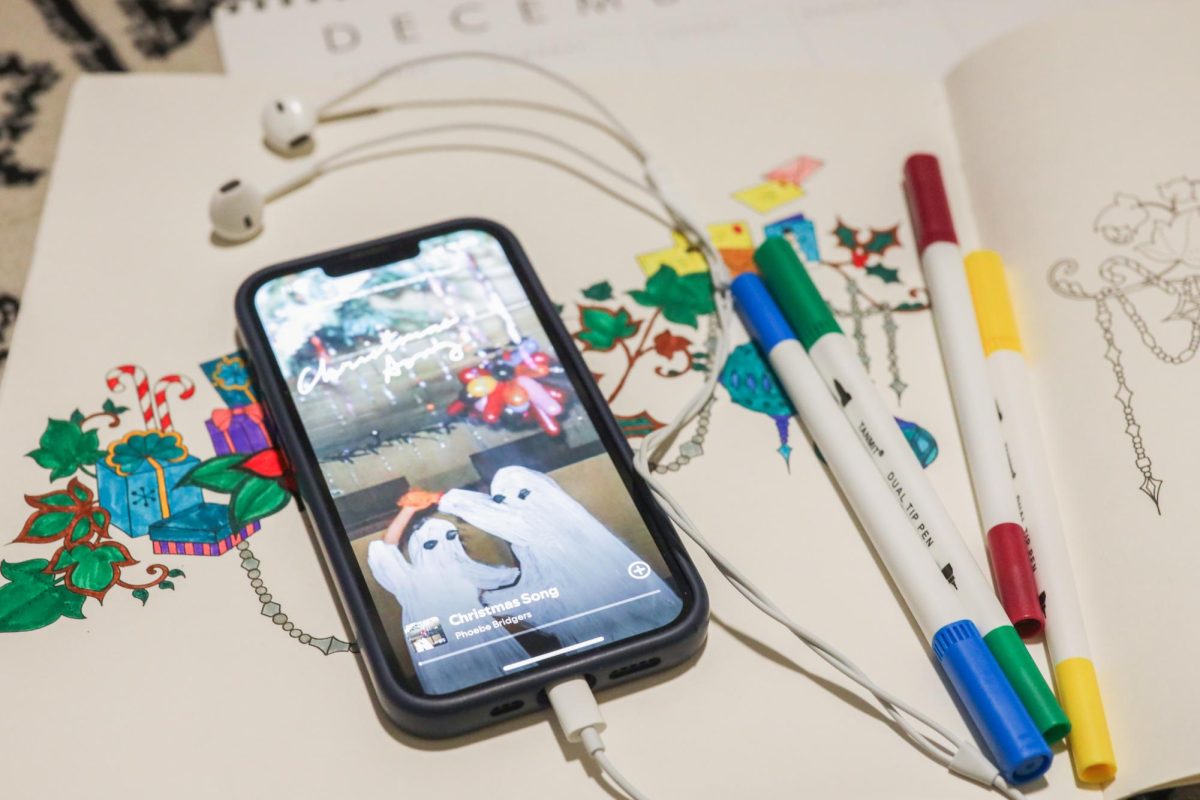A 12-foot-long American flag mosaic tucked into the National Portrait Gallery last weekend looked like any of the museum’s other roving exhibits. Spectators stared, shifted around the room and tried to understand the artist’s commentary on the country.
But the piece, strewn with eyeglasses lenses, was actually more immersive than any other in the museum that day – and possibly in the world. Called “Portrait of America,” the installment was the first public art piece to use the provocative and wondrous Google Glass.
As I situated the technology on my face, I wonder whether the installment would actually work. Too often in art museums across the city, I’ve walked from painting to sculpture, trying to feel something but coming up empty.
Just as I begin to question it, a video of the artist appeared to introduce me to the exhibit. Underneath the rippling exterior comprised of eyeglass lenses is a collage of images ranging from headlines to pop-culture icons.
Audio of speeches by Barack Obama, supplemented by photos, headlines and activities take me to the moon and back – literally. An image of Earth bends in and out of view as I move my eyes, an experience meant to recreate the perspective of Neil Armstrong’s first moon landing. The snugness of the glasses on my face makes the art feel intimate and personal.
This latest piece is part of artist David Datuna’s “Viewpoint of Billions” series, which includes 10 other works, each depicting a flag and culture of a different country. All of the pieces in the series use perspective from eyeglasses or lenses, but “Portrait of America” is the first to use Google Glass.
“We’re looking for a way to attract 21st-century audiences that were raised in a digital age,” said Nik Apostolides, National Portrait Gallery associate director and professor of museum studies at GW.
Google Glass, a lightweight device that slips on like thin glasses, uses complex technology but minimalist design. It has all the features of a smartphone with the added bonus of being hands-free. The museum had nearly a dozen pairs on hand.
When one turns their attention to a region of the piece dedicated to African-American history, a video of Jimi Hendrix’s rendition of “The Star-Spangled Banner” pops up in the Glass, in the upper-right corner of the viewer’s vision.
Its intuitive technology has the capability to ask the wearer questions and respond to requests. For the exhibit, after being calibrated with the flag, viewers turn their heads to certain areas and the Google Glass presents new ways for the viewer to get involved with the piece.
While a sculpture and mixed-media collage are the central parts of the piece, “it also allows people to layer onto that this experience the artist has curated with the Google Glass, the digital imagery and the sounds about the people that are presented in the piece, so it works on many different levels,” Apostolides said.
Datuna, a Georgia-born artist, first came to America 15 years ago and was inspired by the freedom he saw – a sharp contrast to memories of his father being arrested for listening to Elvis Presley in their home country.
“As I watch my beautiful 8-year-old son grow up in New York, it reminds me every day of what motivates me when I create an artwork like ‘Portrait of America.’ There is no greater feeling of motivation than freedom, and the ability for a child to not only dream, but to make his dreams come true, ” Datuna said.
Datuna, who just obtained American citizenship last year, worked with Brick Simple, a mobile developing company based in Pennsylvania, to build and install the advanced technology that connects Google Glass with the piece itself.
“From the technical side of this, I know how many man hours this took. Going into this, it was a huge collaborative effort,” said Paul Rehkugler, Mobile/Web App Developer from Brick Simple.







